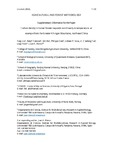Mostrar el registro sencillo del ítem
Carbon density in boreal forests responds non-linearly to temperature: an example from the Greater Khingan Mountains, northeast China
| dc.creator | Liu, Yang | es_ES |
| dc.creator | Trancoso, Ralph | es_ES |
| dc.creator | Ma, Qin | es_ES |
| dc.creator | Ciais, Philippe | es_ES |
| dc.creator | Gouvêa, Lidiane P. | es_ES |
| dc.creator | Yue, Chaofang | es_ES |
| dc.creator | Assis, Jorge | es_ES |
| dc.creator | Blanco Vaca, Juan Antonio | es_ES |
| dc.date.accessioned | 2023-05-25T15:02:20Z | |
| dc.date.available | 2023-05-25T15:02:20Z | |
| dc.date.issued | 2023 | |
| dc.identifier.citation | Liu, Y., Trancoso, R., Ma, Q., Ciais, P., Gouvêa, L. P., Yue, C., Assis, J., Blanco, J. A. (2023) Carbon density in boreal forests responds non-linearly to temperature: an example from the Greater Khingan Mountains, northeast China. Agricultural and Forest Meteorology, 338, 1-12. https://doi.org/10.1016/j.agrformet.2023.109519. | en |
| dc.identifier.issn | 0168-1923 | |
| dc.identifier.uri | https://hdl.handle.net/2454/45309 | |
| dc.description.abstract | Boreal forests play a crucial role in the global carbon (C) cycle and in climate stabilization. To better predict global C budgets, it is important to accurately estimate the size of forest C pools, and to identify the factors affecting them. We used national forest inventory data for the Greater Khingan Mountains, northeast China from 1999 to 2018 and 149 additional field plots to estimate C storage and its changes in forest vegetation, excluding C stored in soils, and to calculate the total C density in forest ecosystems. From 1999 to 2018, the vegetation C storage and density increased by 92.22 Tg and 4.30 Mg C ha−1, respectively, while the mean C sink was 4.61 Tg C yr−1. Carbon storage and density showed the same pattern, with the largest stocks in trees, followed by herbs, shrubs, and then litter. Mean C density was higher in mature forests than in young forests. The maximum C density was recorded in Populus davidiana forests, and was 2.2-times larger than in Betula davurica forests (the minimum). The mean (± standard error) total C density of forest ecosystems was 111.3 ± 2.9 Mg C ha−1, including C stored in soils. Mean annual temperature (MAT) controlled total C density, as MAT had positive effects when it was lower than the temperature of the inflection point (-2.1 to -4.6 °C) and negative effects when it was above the inflection point. The rate of change in the total C density depended on the quantile points of the conditional distribution of total C density. Natural and anthropogenic disturbances had weaker effects on C density than temperature and precipitation. In conclusion, our results indicate that there might be a temperature-induced pervasive decrease in C storage and an increase in tree mortality across Eastern Asian boreal forests with future climate warming. | en |
| dc.description.sponsorship | This study was funded by the National Natural Science Foundation of China (32160363), the Natural Science Foundation of Inner Mongolia Autonomous Region (2021MS03096), the Science and Technology Planning Program of Inner Mongolia Autonomous Region (2020GG0067), the Foundation for Science and Technology (FCT) of Portugal through projects UIDB/04326/2020, UIDP/04326/2020, LA/ P/0101/2020, PTDC/BIA-CBI/6515/2020, and the Individual Call to Scientific Employment Stimulus 2022.00861. Open access funding provided by the Public University of Navarre. | en |
| dc.format.mimetype | application/pdf | en |
| dc.language.iso | eng | en |
| dc.publisher | Elsevier | en |
| dc.relation.ispartof | Agricultural and Forest Meteorology 338 (2023) 109519 | en |
| dc.rights | © 2023 The Author(s). This is an open access article under the CC BY-NC-ND license. | en |
| dc.rights.uri | http://creativecommons.org/licenses/by-nc-nd/4.0/ | |
| dc.subject | Boosted regression trees | en |
| dc.subject | Carbon storage | en |
| dc.subject | Carbon storage change | en |
| dc.subject | Climate influences | en |
| dc.subject | Forest vegetation | en |
| dc.subject | Temperature threshold | en |
| dc.title | Carbon density in boreal forests responds non-linearly to temperature: an example from the Greater Khingan Mountains, northeast China | en |
| dc.type | Artículo / Artikulua | es |
| dc.type | info:eu-repo/semantics/article | en |
| dc.date.updated | 2023-05-25T14:56:38Z | |
| dc.contributor.department | Ciencias | es_ES |
| dc.contributor.department | Zientziak | eu |
| dc.contributor.department | Institute for Multidisciplinary Research in Applied Biology - IMAB | en |
| dc.rights.accessRights | Acceso abierto / Sarbide irekia | es |
| dc.rights.accessRights | info:eu-repo/semantics/openAccess | en |
| dc.identifier.doi | 10.1016/j.agrformet.2023.109519 | |
| dc.relation.publisherversion | https://doi.org/10.1016/j.agrformet.2023.109519 | |
| dc.type.version | Versión publicada / Argitaratu den bertsioa | es |
| dc.type.version | info:eu-repo/semantics/publishedVersion | en |
| dc.contributor.funder | Universidad Pública de Navarra / Nafarroako Unibertsitate Publikoa | es |




